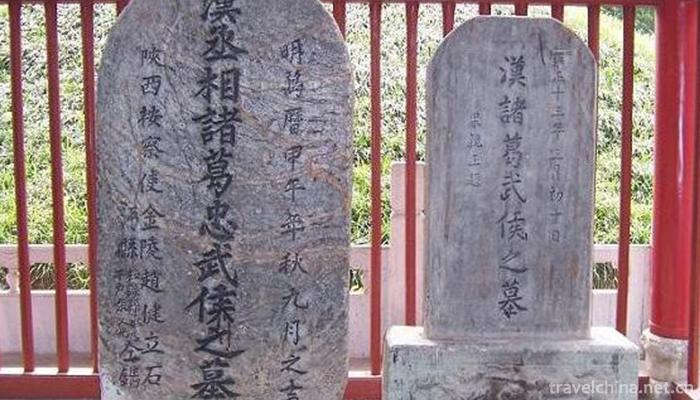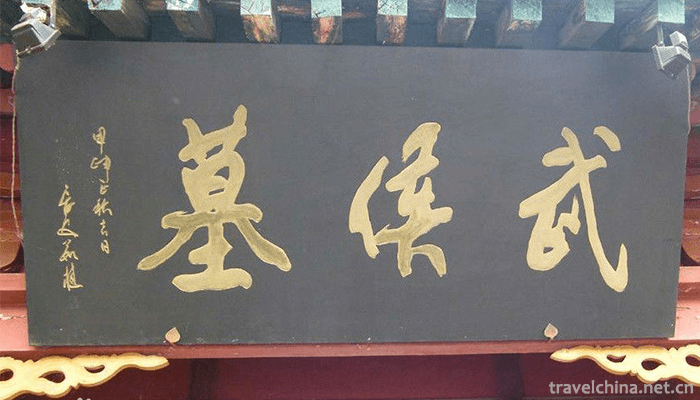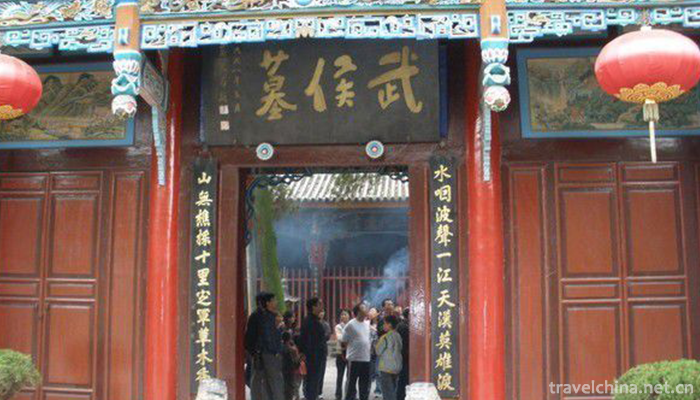Wuhou Tomb Scenic Area
The Tomb of Marquis Wu is the tomb of Zhuge Liang, a famous statesman and militarist in the Three Kingdoms Period. It is located at the foot of the ancient battlefield of Dingjunshan, four kilometers south of Mianxian County. In 234 AD, Zhuge Liang died of illness in the original army of Wuzhang. The court of Shuhan Dynasty was buried there according to his life.
brief introduction
The Tomb of Marquis Wu is the tomb of Zhuge Liang, a famous statesman and militarist in the Three Kingdoms Period. It is located at the foot of the ancient battlefield of Dingjunshan, four kilometers south of Mianxian County. In 234 AD, Zhuge Liang died of illness in the original army of Wuzhang. The court of Shuhan Dynasty was buried there according to his life.
The tomb is 5 meters high and 60 meters square. It is surrounded by eight diagrams. A tombstone is erected in front of the tomb, inscribed with the tomb of Zhuge Liang Wuhou, and behind it there are "tomb guarding shuanggui". The tomb is 19 meters high and its breast circumference is about 1 meter. The tree crown is covered with shade and the grave is elegant and pleasant. The cemetery covers an area of 23,000 square meters. There are more than 60 ancient buildings, 2 Hangui trees and 22 Hanbo trees. The statue of Zhuge Liang on the shrine in the middle of the hall is solemn and solemn, which makes people awe-inspiring. Bookboys stand around, Zhang Bao under the shrine, and Guan Xing separates on both sides. The tomb behind the palace is 6 meters high and 60 meters long. It is a duel-style Tomb of the Han Dynasty. There are many cultural relics in the temple. There are many tablets and tablets on the tomb. It is also a celebration of the noble festival of Gao Fengliang, or a praise of Zhuge Min's wisdom. On the wall, Danqing paints the story of Zhuge Liang. The Tomb of Marquis Wu is a national key cultural relic protection unit and a famous cultural relic tourist attraction.
Summary
In the middle of the hall, the statue of Zhuge Liang, feather fan, silk scarf and treasure statue are solemn and lifelike. Seals and swords stood on both sides. Xiaguan Xing and Zhang Bao were covered with armor, holding commanding arrows and divine whips. They were magnificent and powerful, guarding people around, making people awe-inspiring.
The Eastern and Western Chambers and the Southern Courtyard Taoist View are large-scale sculpture exhibitions of Zhuge Liang, a generation wise star. They are divided into 30 groups. They once again vividly show Zhuge Liang's political and military feats in his life. The historical materials are abundant and magnificent, ranging from round carvings to reliefs to murals. They are always regarded as a whole. Each scene has its own scenes. The characters are realistic and the scenes are magnificent. It gives people a sense of the Golden Golden Horse and the murder of the heavens.
The grand mound behind the palace is majestic and looks like a duel. It is a bright tomb with a height of 6 meters and a circumference of 60 meters. It is surrounded by white marble fences of the Han Dynasty. There are 35 reliefs on the mound with the story pattern of Zhuge Liang's life. In front of the tomb, there is a four-cornered Pavilion called the former grave pavilion. Gaoqiao Pavilion, surrounded by wooden railings, hangs a plaque of "Shuangguiliufang" in the pavilion, and two tombstones are erected in the pavilion. One is the tombstone of "the Tomb of the prince of Wuhu of Zhuge Liang of Han" erected by Zhao Jianjian, the envoy of Jinling in 1549 A.D. in the Ming Dynasty, and the other is the tombstone of "the Tomb of the prince of Wuhan Zhuge Liang of Wuhan" erected by the prince of Guo in the 13th year of Yongzheng in the Qing Dynasty (A.D. 1735 Tomb East-West direction, head west foot east, take "Yonghuai Xishu, Xingfu Han room" meaning.
Before the temple worship, Hanbo was entwined with vines, the common name of "Xiaohua" is "climbing cypress and Xiaoshu". The leaves are green like toon and the flowers are red like morning glory. They blossom every year from summer to autumn and last for a hundred days. Every flower season, evening, red Ying everywhere. Looking far away, we can see the green cypress, dotted with red flowers, red and green, very beautiful, giving people the feeling of thousands of years old cypress blooming red flowers, is very beautiful. Putting together Xiaohua symbolizes Zhuge Liangxing's rejuvenation of the Han Dynasty and his dedication to serving the country and the people.
Pictures From: http://bbs.fengniao.com/forum/1397239.html



0 Questions
Ask a Question
Your email address will not be published.